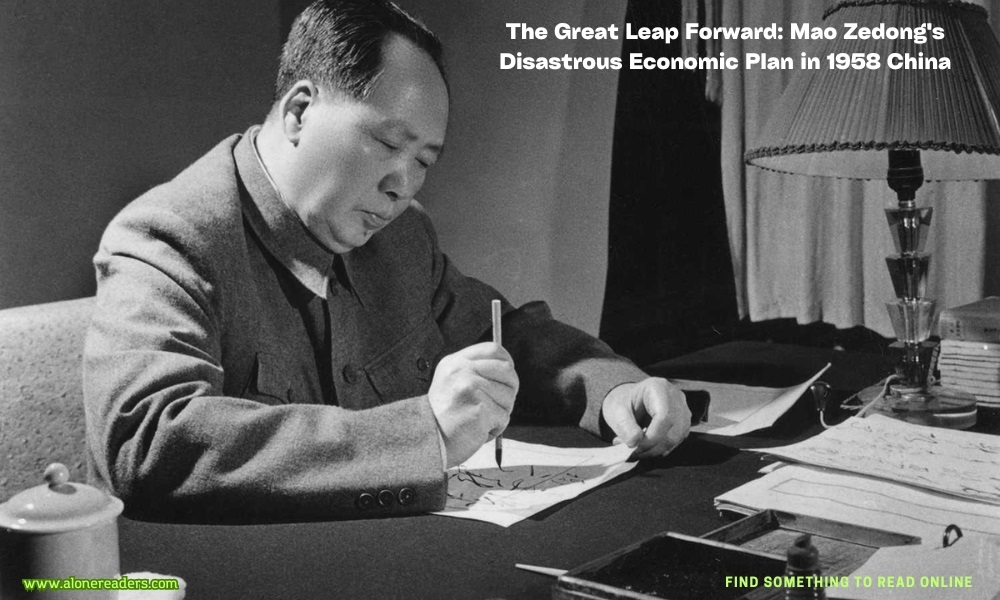
The Great Leap Forward, initiated by Mao Zedong in 1958, stands as one of the most ambitious yet catastrophic economic and social campaigns in modern history. Aimed at rapidly transforming China from an agrarian economy into a socialist society through rapid industrialization and collectivization, the plan instead led to one of the most devastating famines in human history, resulting in the death of millions and causing severe economic and social disruption.
Mao Zedong, the founding father of the People’s Republic of China, launched the Great Leap Forward with the intention of catapulting the nation into the ranks of the world powers over a short period. This was to be achieved by massively increasing the production of steel and other industrial goods. Villagers across China were moved to communal farms and large scale projects such as irrigation works were initiated. The people were organized into large communes that often included several villages, abolishing private land ownership and combining the populace's resources.
The enthusiasm and revolutionary fervor were initially palpable, with Mao's government reporting phenomenal increases in grain and steel production. However, these figures were grossly inflated as local officials, fearful of punishment, competed to meet or exceed the production quotas by reporting exaggerated success. This misinformation led the central government to believe that the country had produced far more food than it actually had, which in turn prompted the authorities to increase the grain requisition quotas from the countryside to feed the urban populations and even to export food to other countries to fund industrial machinery and weapons.
The reality on the ground was starkly different. The focus on steel production led to the neglect of agriculture. Untrained farmers melted down metal tools to meet the impossible steel quotas, and the production of usable, high-quality steel in makeshift rural furnaces was impractical and largely failed. Simultaneously, the collectivization of agriculture and the lack of incentives led to decreased productivity on the farms. As a result, from 1959 to 1961, China was swept by a catastrophic famine. Estimates on the number of fatalities vary, but conservative figures suggest at least 15 million people died, with some estimates going as high as 45 million.
Furthermore, the ecological damage was profound. The Great Leap Forward's policy of using more land for farming by cutting down forests and converting land led to widespread environmental degradation. Soil erosion, deforestation, and the disruption of natural flood defenses exacerbated the impact of natural disasters like floods and droughts during the period.
Mao Zedong and the Chinese Communist Party (CCP) initially refused to acknowledge the extent of the disaster, attributing the hardships to natural disasters and the actions of foreign enemies. However, internal dissent within the party, spearheaded by State Chairman Liu Shaoqi and others, eventually forced Mao to confront the failure of the Great Leap Forward. By 1962, the policy was officially withdrawn, and efforts were made to decentralize agricultural control and restore private plots to farmers, which helped in reviving agricultural production.
The Great Leap Forward left a lasting impact on Chinese society and its economy. It exposed the dangers of rapid and poorly planned economic strategies and the human cost of political campaigns. The lessons learned from this period influenced subsequent reforms, particularly those implemented by Deng Xiaoping in the late 1970s and onwards, which focused more on economic pragmatism and gradual liberalization.
In retrospect, the Great Leap Forward is a significant chapter in the history of modern China, serving as a stark reminder of the potential human and ecological costs of forced economic development. It is a subject of extensive study and debate among historians and economists, symbolizing the complexities of implementing radical change in vast and diverse societies.